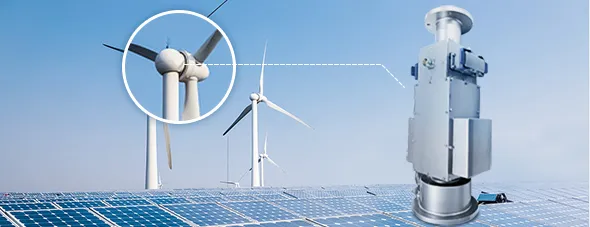What can slip ring owners do to maintain wind turbines in the right working conditions? Is there a particular routine to improve the performance and life of slip rings in the turbines? It costs a lot to have an excellent working wind turbine. With the need to reduce maintenance costs to increase profit margin, customers must look for ways to keep the turbine up and running for longer. How can a customer do that?
Turbines are a product of the need for safe and green energy. They work to produce energy for various purposes. For that reason, the wind turbine should be at maximum performance always. They do that if they are in the right working conditions. All components must be functioning and in the proper form. Slight damage can lead to the turbine not working correctly or total failure.
Wind Turbines and Slip Rings
Proper maintenance and design of a wind turbine are vital. A customer must make sure the wind arms and every other part of it are functioning accordingly, for reliability and long life. Just because it rotates high in the air doesn’t mean that it doesn’t need maintenance.
One component that is vital in wind turbines is the slip rings. Just as they work to transfer signals and electricity from stationary parts to moving parts in a rotating machine, the turbine slip ring functions to transmit power to motors in the blades and share signals back to the tub from sensors in the edges. This entire process leads to optimum wind energy generation.
What Happens if There Is No Maintenance?
A lot can happen. A small mishap in the slip ring can cause miscommunication of signals, breakdown of the whole system, and may lead to extra expenses of buying a new one. For the above reasons, a customer should have routine maintenance to make sure everything is functioning.
What can a wind turbine owner do to make sure the slip ring installed is reliable? It sounds simple to maintain a slip ring, right? However, knowing where to start, and what to look for might be difficult. The following points are the routine tasks that one should do to extend the slip ring’s life.
1) Do a Visual Inspection
At times, all you need is to look at the wind turbine to assess its condition visually. Is it rotating accordingly? Are there broken blades? Looking at it while it works gives you a hint of where to start your maintenance from. That can be any time when the turbine is up and rotating.
You can also make use of the predictive analytics platform. It is an excellent platform that aids a customer in monitoring and extracting data on how the wind turbine is functioning. The trending analysis is about performance, component fatigue, any internal worn-out part, and overall expected production. The information gives you an insight into where to start the maintenance process.
2) Occasionally, Remove Dust
When a manufacturer makes a wind turbine slip ring, it is supposed to withstand harsh weather conditions like vibrations, high temperatures, and dirt. All these can cause the wind turbine to slag, loss of transmission and communication, and failure to relay the right signals making it perform less. What can a customer do?
A customer should do a routine dusting of the wind turbine slip ring. The area of installation of the slip ring should be dust-free. So, making use of compressed air or a vacuum system to remove the dirt makes sure there is no dust in the power and signal transmission.
3) Maintain Overall Cleanliness
Yes, dust is the number one contributing factor to slip ring failure, cause of corrosion, and miscommunication of signals. But as said earlier, the wind turbine works under other extreme working conditions. It means that the slip ring and blades have other factors that can cause it to fail.
It can be spilling oil from other parts, excess humidity, and sand. Because of this, a customer must be ready to clean up and dust all excess water, oil, and sand that come in contact with the wind turbine slip ring. It can be once in one year during the other routine checkups.
4) Be Keen on the Brushes
As you already know, the brushes in a slip ring play a significant role. They brush against the conductive metal and, in the process, conduct power and signal. For reliable electrical contact, the brushes must be in good working condition at the time. Due to continuous brushing, the brushes wear out due to friction, corrosion, or working for a long time.
Worn-out brushes result in a breakdown of the communication process and turbine ineffectiveness. The good thing is advanced modern brushes have 200 million resolutions meaning they can last for up to 10 years. Scheduling routine maintenance makes sure the brushes improve their performance and lasts for ten years.
5) Maintain Overall Safety
Some small mistakes one makes can also fail slip rings in wind turbines. Customers must make sure that there is no interference in the wind turbine working conditions at all times. Apart from making routine checkups, there are other safety measures that one should take.
For example, an engineer may step on the slip ring as he or she tries to climb the wind turbine. That can lead to a breakdown, right? Also installing the slip ring the wrong way can lead to the overall failure of the turbines. It means overall safety should be in consideration when it comes to handling wind turbines.
Conclusion
A robust wind turbine is productive and efficient in performance. For a wind turbine owner, care and maintenance should be your top priority for the turbine to last longer and function. The slip ring is the single most vital device in a wind turbine. That’s because it transmits signals and power from the stationary parts to the blades. These above maintenance routines assist wind turbine owners in maintaining the wind turbine.
See What We Can Do

